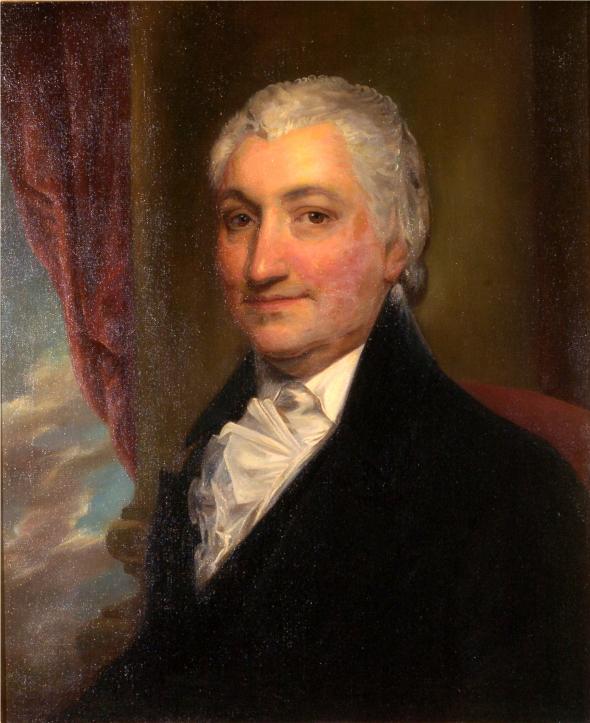|
BioMedical Engineering OnLine
''BioMedical Engineering OnLine'' is a peer-reviewed online-only open access scientific journal covering biomedical engineering. It was established in 2002 and is published by BioMed Central. The editors-in-chief are Ervin Sejdic ( University of Pittsburgh and Fong-Chin Su (National Cheng Kung University National Cheng Kung University (NCKU; ) is a public research university located in Tainan, Taiwan. The university is best known for engineering, computer science, medicine, and planning and design. As a top university in Taiwan, NCKU has played ...). According to the '' Journal Citation Reports'', the journal has a 2018 impact factor of 2.013. References External links * BioMed Central academic journals Online-only journals Academic journals established in 2002 English-language journals Biomedical engineering journals {{biomed-engineering-stub ... [...More Info...] [...Related Items...] OR: [Wikipedia] [Google] [Baidu] |
Biomedical Engineering
Biomedical engineering (BME) or medical engineering is the application of engineering principles and design concepts to medicine and biology for healthcare purposes (e.g., diagnostic or therapeutic). BME is also traditionally logical sciences to advance health care treatment, including diagnosis, monitoring, and therapy. Also included under the scope of a biomedical engineer is the management of current medical equipment in hospitals while adhering to relevant industry standards. This involves procurement, routine testing, preventive maintenance, and making equipment recommendations, a role also known as a Biomedical Equipment Technician (BMET) or as clinical engineering. Biomedical engineering has recently emerged as its own study, as compared to many other engineering fields. Such an evolution is common as a new field transition from being an interdisciplinary specialization among already-established fields to being considered a field in itself. Much of the work in biomedica ... [...More Info...] [...Related Items...] OR: [Wikipedia] [Google] [Baidu] |
National Cheng Kung University
National Cheng Kung University (NCKU; ) is a public research university located in Tainan, Taiwan. The university is best known for engineering, computer science, medicine, and planning and design. As a top university in Taiwan, NCKU has played a vital role in creating the Taiwan Miracle by helping Taiwan to transform from an agriculture-based society to an industrialized economy during the 1960s and 1970s, and further becoming one of the Four Asian Tigers. NCKU has been taking the top spot at the Global Views Monthly (遠見雜誌) Taiwan Graduate Employability Rankings for 6 consecutive years. In 2005, NCKU was chosen by the Ministry of Education (Taiwan) as one of the seven universities in Taiwan for the Aim for the Top University Project (), which is similar to Top Global University Project in Japan and Universities of Excellence in Germany. Starting from 2006, because of its academic performance and research potential, the Ministry of Education (Taiwan) has offered NCKU NT$ ... [...More Info...] [...Related Items...] OR: [Wikipedia] [Google] [Baidu] |
Academic Journals Established In 2002
An academy (Attic Greek: Ἀκαδήμεια; Koine Greek Ἀκαδημία) is an institution of secondary or tertiary higher learning (and generally also research or honorary membership). The name traces back to Plato's school of philosophy, founded approximately 385 BC at Akademia, a sanctuary of Athena, the goddess of wisdom and skill, north of Athens, Greece. Etymology The word comes from the ''Academy'' in ancient Greece, which derives from the Athenian hero, ''Akademos''. Outside the city walls of Athens, the gymnasium was made famous by Plato as a center of learning. The sacred space, dedicated to the goddess of wisdom, Athena, had formerly been an olive grove, hence the expression "the groves of Academe". In these gardens, the philosopher Plato conversed with followers. Plato developed his sessions into a method of teaching philosophy and in 387 BC, established what is known today as the Old Academy. By extension, ''academia'' has come to mean the accumulation, de ... [...More Info...] [...Related Items...] OR: [Wikipedia] [Google] [Baidu] |
BioMed Central Academic Journals
BioMed Central (BMC) is a United Kingdom-based, for-profit scientific open access publisher that produces over 250 scientific journals. All its journals are published online only. BioMed Central describes itself as the first and largest open access science publisher. It was founded in 2000 and has been owned by Springer, now Springer Nature, since 2008. History BioMed Central was founded in 2000 as part of the Current Science Group (now Science Navigation Group, SNG), a nursery of scientific publishing companies. SNG chairman Vitek Tracz developed the concept for the company after NIH director Harold Varmus's PubMed Central concept for open-access publishing was scaled back. The first director of the company was Jan Velterop. Chemistry Central was established in 2006 and the PhysMath Central journal imprint in 2007. In 2002, the company introduced article processing charges, and these have since been the primary source of revenue. In 2007 Yale University Libraries stopped s ... [...More Info...] [...Related Items...] OR: [Wikipedia] [Google] [Baidu] |
Clarivate Analytics
Clarivate Plc is a British-American publicly traded analytics company that operates a collection of subscription-based services, in the areas of bibliometrics and scientometrics; business / market intelligence, and competitive profiling for pharmacy and biotech, patents, and regulatory compliance; trademark protection, and domain and brand protection. In the academy and the scientific community, Clarivate is known for being the company which calculates the impact factor, using data from its Web of Science product family, that also includes services/applications such as Publons, EndNote, EndNote Click, and ScholarOne. Its other product families are Cortellis, DRG, CPA Global, Derwent, MarkMonitor, CompuMark, and Darts-ip, and also the various ProQuest products and services. Clarivate was formed in 2016, following the acquisition of Thomson Reuters' Intellectual Property and Science Business by Onex Corporation and Baring Private Equity Asia. Clarivate has been growing fa ... [...More Info...] [...Related Items...] OR: [Wikipedia] [Google] [Baidu] |
Impact Factor
The impact factor (IF) or journal impact factor (JIF) of an academic journal is a scientometric index calculated by Clarivate that reflects the yearly mean number of citations of articles published in the last two years in a given journal, as indexed by Clarivate's Web of Science. As a journal-level metric, it is frequently used as a proxy for the relative importance of a journal within its field; journals with higher impact factor values are given the status of being more important, or carry more prestige in their respective fields, than those with lower values. While frequently used by universities and funding bodies to decide on promotion and research proposals, it has come under attack for distorting good scientific practices. History The impact factor was devised by Eugene Garfield, the founder of the Institute for Scientific Information (ISI) in Philadelphia. Impact factors began to be calculated yearly starting from 1975 for journals listed in the ''Journal Citation Rep ... [...More Info...] [...Related Items...] OR: [Wikipedia] [Google] [Baidu] |
Journal Citation Reports
''Journal Citation Reports'' (''JCR'') is an annual publicationby Clarivate Analytics (previously the intellectual property of Thomson Reuters). It has been integrated with the Web of Science and is accessed from the Web of Science-Core Collections. It provides information about academic journals in the natural sciences and social sciences, including impact factors. The ''JCR'' was originally published as a part of ''Science Citation Index''. Currently, the ''JCR'', as a distinct service, is based on citations compiled from the '' Science Citation Index Expanded'' and the '' Social Sciences Citation Index''.- - - Basic journal information The information given for each journal includes: * the basic bibliographic information of publisher, title abbreviation, language, ISSN * the subject categories (there are 171 such categories in the sciences and 54 in the social sciences) Citation information * Basic citation data: ** the number of articles published during that year and ** ... [...More Info...] [...Related Items...] OR: [Wikipedia] [Google] [Baidu] |
University Of Pittsburgh
The University of Pittsburgh (Pitt) is a public state-related research university in Pittsburgh, Pennsylvania. The university is composed of 17 undergraduate and graduate schools and colleges at its urban Pittsburgh campus, home to the university's central administration and around 28,000 undergraduate and graduate students. The 132-acre Pittsburgh campus includes various historic buildings that are part of the Schenley Farms Historic District, most notably its 42-story Gothic revival centerpiece, the Cathedral of Learning. Pitt is a member of the Association of American Universities and is classified among "R1: Doctoral Universities – Very high research activity". It is the second-largest non-government employer in the Pittsburgh metropolitan area. Pitt traces its roots to the Pittsburgh Academy founded by Hugh Henry Brackenridge in 1787. While the city was still on the edge of the American frontier at the time, Pittsburgh's rapid growth meant that a proper university was so ... [...More Info...] [...Related Items...] OR: [Wikipedia] [Google] [Baidu] |
Ervin Sejdic
Ervin Sejdic is North York General Hospital's Research Chair iArtificial Intelligence for Health Outcomes He focuses on biomedical signal processing, gait analysis, swallowing difficulties, advanced information systems in medicine, rehabilitation engineering, assistive technologies and anticipatory medical devices. He was previously a researcher at the Swanson School of Engineering, University of Pittsburgh, where he directs a research laboratory focused on engineering developments in medicine. His research has focused on creating computational biomarkers indicative of age- and disease-related changes in functional outcomes such as swallowing, gait and handwriting. In particular, he aims to develop clinically relevant solutions by fostering innovation in mechatronic systems (computational data-centric approaches and instrumentation) that can be translated to bedside care. Due to his contributions in signal processing and biomedical engineering, Sejdic has been named to editorial ... [...More Info...] [...Related Items...] OR: [Wikipedia] [Google] [Baidu] |
Editors-in-chief
An editor-in-chief (EIC), also known as lead editor or chief editor, is a publication's editorial leader who has final responsibility for its operations and policies. The highest-ranking editor of a publication may also be titled editor, managing editor, or executive editor, but where these titles are held while someone else is editor-in-chief, the editor-in-chief outranks the others. Description The editor-in-chief heads all departments of the organization and is held accountable for delegating tasks to staff members and managing them. The term is often used at newspapers, magazines, yearbooks, and television news programs. The editor-in-chief is commonly the link between the publisher or proprietor and the editorial staff. The term is also applied to academic journals, where the editor-in-chief gives the ultimate decision whether a submitted manuscript will be published. This decision is made by the editor-in-chief after seeking input from Peer review, reviewers selected on the ... [...More Info...] [...Related Items...] OR: [Wikipedia] [Google] [Baidu] |




